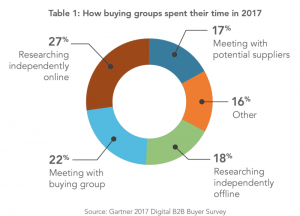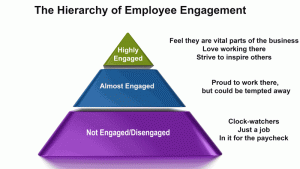Training employees became a crucial part for enterprises for years, but the Coronavirus has made it more critical. It’s 2021, and companies somehow managed 2020 and the second wave has already begun. The Pandemic forced Learning & Development professionals to rethink training programs and accelerate digital transformation initiatives.
According to the Training industry report published by Statista Research, training expenditure in the U.S has a dramatic increase of 26.7 billion dollars from 2012 to 2020. In 2020, the total expenditure on workforce training is 82.5 billion dollars. For many enterprises, the amount spent doesn’t lead to a better outcome.
What goes wrong
Organizations must understand what their employees want and provide the right knowledge which can help them progress in their careers. More than 73% feel that they aren’t achieving full potential at work due to a lack of development opportunities. Training is effective only when your employees are eager to learn and develop their skills.
Enterprises don’t want the training to be longer, as the time and endeavor of training is perceived as simply a cost. They want their employees to be productive at the earliest. Having this in mind, if L&D professionals and Business leaders design a training framework, do you think it will be successful?
No, if you consider the following stats:
- 50% of companies in the U.S. don’t have formal training strategies in place to address the employee skills gap.
- According to Gartner reports, more than 70% of employees say that don’t have mastery of skills they require for their jobs.
Today’s employees undergo uniform training, as per L&D’s schedule. The top management spends more time on designing training program and delivering it effectively to their workforce, but comparatively, spend less time in understanding whether training had its intended impact or not.
Failing to attain the desired level of productivity is because of not measuring or validating your training efforts. According to Bob Parsons, Founder of GoDaddy “Anything that is measured and watched, improves.” You must keep track of the effectiveness of your employee training program to make it worthwhile.
Learning is done, next is your implementation phase. Employees encounter many problems when they get their first hands-on experience on the enterprise tools. They forget what they have learnt at the initial stage or finding it difficult to perform complex operations.
The Forgetting curve
The Forgetting curve was discovered by Hermann Ebbinghaus, a German psychologist, in 1885. Still, it continues to plague today’s L&D team. Based on the training methods (Instructor-led, On-the-job, case studies) that you choose, your employees forgetting curve varies.
As time goes, the tendency to remember the syllabus decreases. Armitage Miller’s paper on “The Magical Number 7 ± 2”, says that an individual can hold only the 7 ± 2 amount of information in his/her short-term memory. Thousands of dollars are spent every year on training and employees keep forgetting the skills. That’s a lot of resources (time, energy, money) wasted each year.
It is significant to understand the pitfalls of training to produce expected results from employee onboarding and training programs. Are you still stuck with the forgetting curve? It is the right time to overcome it by providing the right content at the right time to your employees. Kathryn Minshew, CEO of The Muse says, “Understanding your employee’s perspective can go a long way towards increasing productivity and happiness.”
Memorization is not the only challenge, several other employee-related challenges can also hamper employee learning experiences. For example, when employees are not ready to accept or adapt your product, then your training process gets halted. Employee change resistance is the root cause for the majority of employee-related challenges.
Defining Change agenda
An employee needs retraining to keep remembering things and to improve their performance. Gregory Balestrero says, “Employees cannot become more productive in every sense of the word unless they are provided with continuous on-the-job training.” Introducing employees to enterprise software and training them continuously is not an easy task.
Employee change resistance can be a roadblock to successful training. CEOs and HR leaders must be careful in handling employee change resistance. Leadership IQ compiled the responses after interviewing 1087 leaders on “Why the CEOs get fired”, the top reason is poor change management.
CEOs must take change resistance as a serious challenge and find the best possible way to overcome it. This alarming situation can be addressed with the latest technology that provides seamless change management and ensures all-day training.
All-Day training
Training your employees every day and ensuring smooth software adoption is made possible with the Digital Adoption Platform. Gartner claims that by 2025, 70% of organizations will use digital adoption solutions to improve employee engagement, usage, and productivity.
According to Randy Bernard “Adoption is when your people are outperforming and overachieving because they are actually using AND LOVING the technologies which you have made available to them.”
Digital Adoption Platform provides on-screen guidance that can help your employees learn in real-time within the application and without the need of a trainer. Research says to develop an hour of training, instructor-led training required 40 to 49 hours, and e-learning modules required 73 to 154 hours. With DAP, you can do it in minutes.
DAP identifies the place where your employees need help, your L&D team can address the issue with personalized content. With the Digital Adoption Platform, create and launch customized walkthroughs, which can help employees self-learn and overcome any challenge they encounter.
Having implemented DAP to your training and development program will reap fruitful outcomes. With the right DAP, you can get 300% faster software adoption, a 40% increase in employee productivity, and 80% savings in training cost.
Summing it up
Training can be made effective when done right. Train your employees regularly and keep them engaged, productivity is guaranteed. Leverage the right technology, address employee-related challenges, successfully onboard employees, and achieve business goals.
Business & Finance Articles on Business 2 Community(51)







